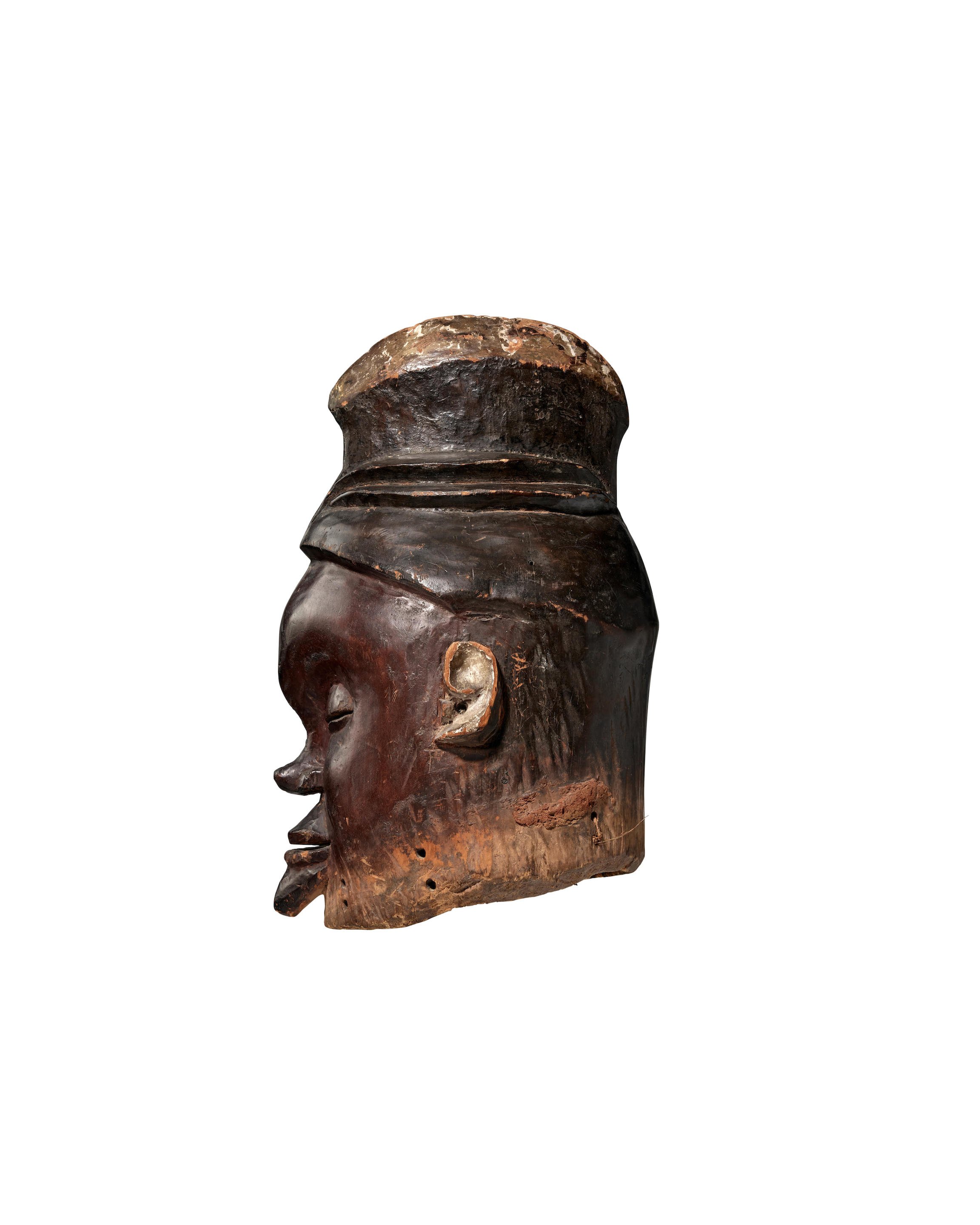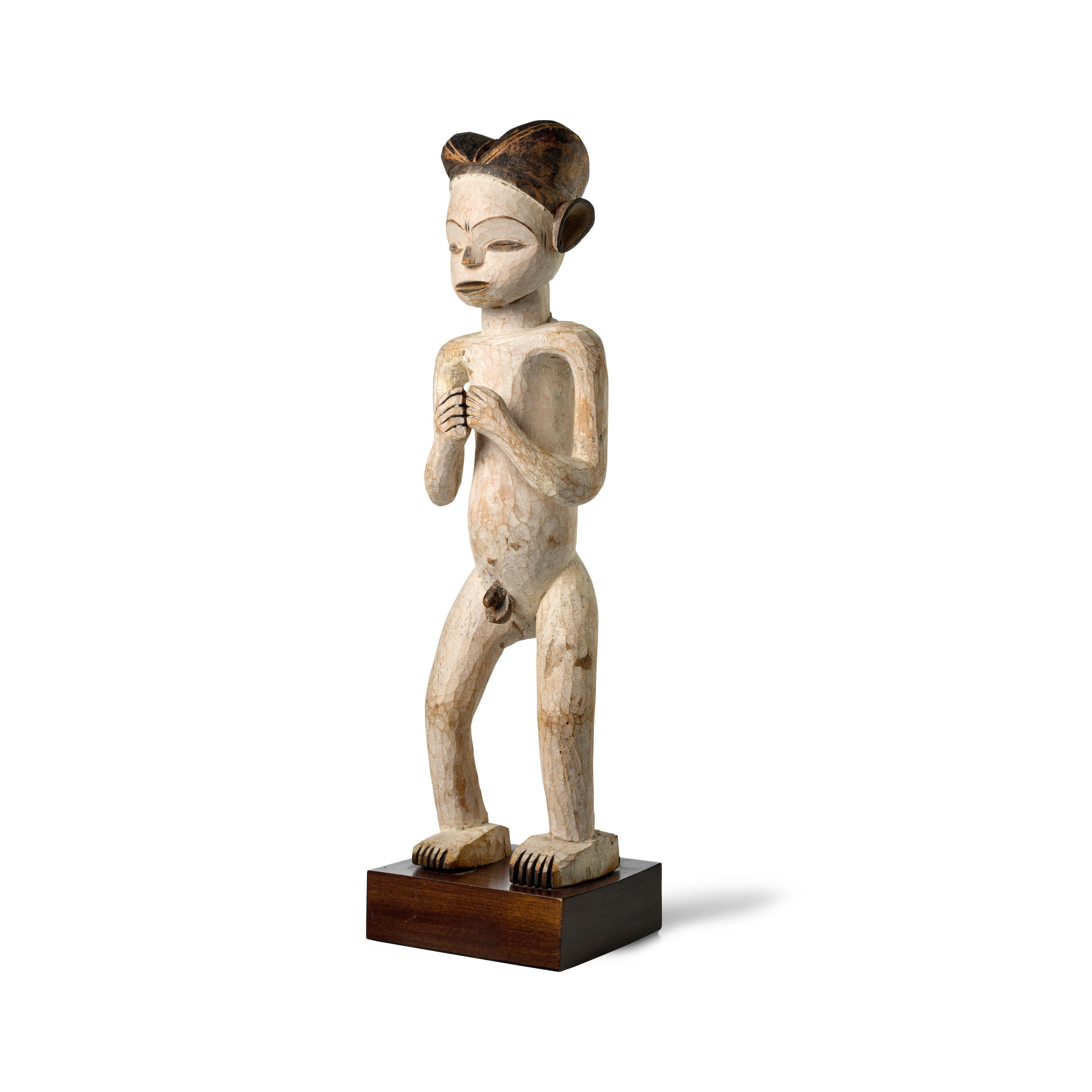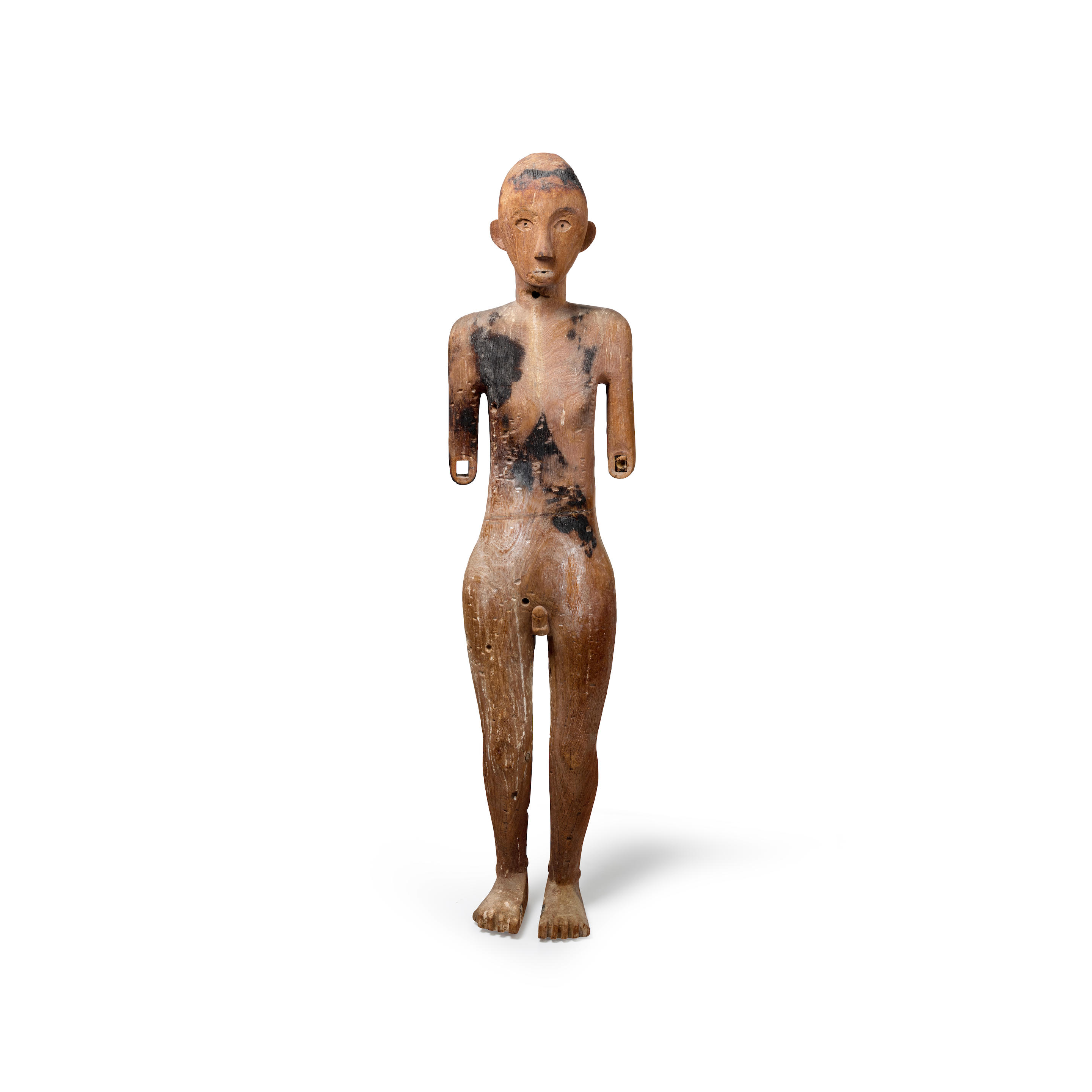na kua kuku
Kolea wood
Length 73 1/4in (186cm)
Provenance
Hawaiian Private Collection
As noted by William Brigham, "The Hawaiians, however, used an independent anvil made in a definite and little varying form after the primitive log had been discarded for something more convenient or efficient. I would not claim that the transition was immediate from the stem of a tree, or a rude log, to the complete anvil here figured. Doubtless there were many and various forms intervening, but the anvils in use at the time of the discontinuance of kapa-making were of this definite form, and none of the primitive ones had survived as far as known. It is noteworthy that the people of the other groups still held to the rectangular log, often (as in Tahiti) of considerable length, and so far, as the accounts of travellers or the collections in museums show us, used no form so specialized as that on the Hawaiian group." ("Ka Hana Kapa: The Making of Bark-Cloth in Hawaii,' Memoirs of the Bernice Pauahi Bishop Museum of Polynesian Ethnology and Natural History, Vol. III, Bishop Museum Press, 1911 pp. 77-78)
Brigham further notes there are just twenty examples in the Museum, and that in each "the underside was excavated longitudinally and the ends were bevelled...Supported thus these logs were quite resonant, and the old Hawaiians had a use for this beyond the titillation of the ear. The blows of the beater on this anvil could be heard at a considerable distance and were not unpleasing, damped as they were by the moist fibre between the opposed surfaces. Talking by means of a well understood code of signals (as sort of Morse alphabet), the old ladies beating kapa could disseminate the latest gossip telephonically thorough a long valley, and I have found the news of my coming had passed through a long valley, and I have found the news of my coming had passed through the air long before I came in sight of a party of kapa-makers, as I rode up the valley trail." (Ibid. p. 78)
na kua kuku
Kolea wood
Length 73 1/4in (186cm)
Provenance
Hawaiian Private Collection
As noted by William Brigham, "The Hawaiians, however, used an independent anvil made in a definite and little varying form after the primitive log had been discarded for something more convenient or efficient. I would not claim that the transition was immediate from the stem of a tree, or a rude log, to the complete anvil here figured. Doubtless there were many and various forms intervening, but the anvils in use at the time of the discontinuance of kapa-making were of this definite form, and none of the primitive ones had survived as far as known. It is noteworthy that the people of the other groups still held to the rectangular log, often (as in Tahiti) of considerable length, and so far, as the accounts of travellers or the collections in museums show us, used no form so specialized as that on the Hawaiian group." ("Ka Hana Kapa: The Making of Bark-Cloth in Hawaii,' Memoirs of the Bernice Pauahi Bishop Museum of Polynesian Ethnology and Natural History, Vol. III, Bishop Museum Press, 1911 pp. 77-78)
Brigham further notes there are just twenty examples in the Museum, and that in each "the underside was excavated longitudinally and the ends were bevelled...Supported thus these logs were quite resonant, and the old Hawaiians had a use for this beyond the titillation of the ear. The blows of the beater on this anvil could be heard at a considerable distance and were not unpleasing, damped as they were by the moist fibre between the opposed surfaces. Talking by means of a well understood code of signals (as sort of Morse alphabet), the old ladies beating kapa could disseminate the latest gossip telephonically thorough a long valley, and I have found the news of my coming had passed through a long valley, and I have found the news of my coming had passed through the air long before I came in sight of a party of kapa-makers, as I rode up the valley trail." (Ibid. p. 78)















Try LotSearch and its premium features for 7 days - without any costs!
Be notified automatically about new items in upcoming auctions.
Create an alert